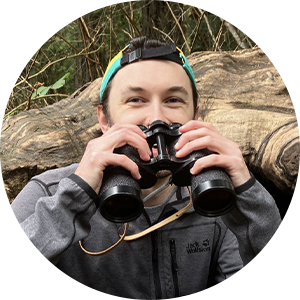Open-access publishing is revolutionizing university press systems, breaking down financial barriers and democratizing access to scholarly research. This rapid transformation, fueled by the pandemic, is reshaping how academic knowledge is shared, making high-impact research accessible to a broader, global audience. As universities adapt, this inclusive shift toward open access is ushering in a new era of innovation in scholarly publishing.
University presses drive open access. Funding hurdles persist.
Nontraditional university presses are pioneering open-access publishing, yet navigating the financial landscape remains a significant challenge.

Pioneering Change: The Rise of Open Access in University Publishing
Since the early 2000s, university publishing has witnessed the rise of nontraditional pathways, such as library publishers and new university presses (NUPs). According to Arthur Andrew Rouner, director of the Mason Publishing Group, these pathways initially focused on remediating out-of-copyright materials, laying the groundwork for the subsequent growth of open-access initiatives.
As a NUP publishing digital, open-access monographs under Creative Commons licenses “to maximize opportunities for reuse,” Lever Press provides titles directly to JSTOR Open, Muse Open, Open Research Library and OAPEN. According to Acquiring Editor Sean Guynes, these titles have been requested thousands of times across every continent on Earth, with more than 130 million downloads; 4 million of which are just in the last year.
Similarly, a 2021 survey of the membership of the Association of University Presses, an international organization of approximately 160 major academic publishers, found that more than 80% of respondents engaged with open access on some level.
“The widespread experimentation with a variety of OA models indicates our community’s interest in and support of sustainable OA publishing, which may be seen as a natural extension of a shared mission to ensure academic excellence and cultivate knowledge,” said Peter Berkery, executive director of the Association of University Presses.
Expanding Reach and Engagement: The Growing Impact of Open Access
Kate O’Brien Nicholson, associate director of marketing and sales at Fordham University Press, has also witnessed a significant increase in demand for accessible digital resources, which she attributes to the sudden pivot to remote learning.
Feedback from users indicates a demand for accessibility in the OA space, particularly for alternative formats such as audiobooks.
“I would say, the people who most benefit from OA resources are those from under-funded institutions (who can’t pay the pay-wall tolls from big for-profit academic publishers) or people who are unaffiliated—independent scholars, secondary students, et cetera,” Rouner said.
According to Hannah Brooks-Motl, acquisitions editor at Amherst College Press, many scholars, particularly earlier-career researchers, are more interested in disseminating their work widely within the scholarly community than in revenue generation.
Mohammad Afzal Shadab, a graduate student researcher of fluid dynamics at the University of Texas’s Oden Institute, has seen the firsthand impact of open science.
“One of our more cited works involves applying physics-informed machine learning to predict groundwater aquifer dynamics,” said Shadab. “The engagement with this research has been notable, partly due to our open science approach—sharing videos, code, and manuscripts openly has led to regular queries and discussions about the work.”
According to Berkery, The Association of University Presses sees open-access initiatives as part of a broader trend promoting accessibility within university publishing, which they predict will be a major theme in the industry for the foreseeable future.
Adapting to Change: The Pandemic’s Role in Accelerating Open Access
Although the pandemic accelerated the shift toward open-access models, the rapid open-access growth during COVID is not a “bubble,” as Lucy Barnes and Rupert Gatti of the University of Cambridge-based Open Book Publishers point out. Data indicates the demand grew significantly before worldwide lockdowns, even as the pandemic necessitated a marked increase in book downloads.
“[COVID] catalyzed a reevaluation of digital and open-access publishing models, which are now increasingly embraced by new and established presses alike,” said O’Brien Nicholson. “This shift has ultimately supported the growth of UPs by providing more flexible and resilient publishing pathways.”
Amherst College Press saw a similar trend take place with the lockdowns solidifying the benefits of open access. Major U.S. university presses opened their backlists, and people from all over the world accessed their books.
“Suddenly, everyone benefited from freely available scholarly books,” said Brooks-Motl. “While the circumstances under which OA became normalized were anything but normal, the pandemic did decisively shift conversations around OA for publishers and, in my experience as an acquisitions editor, for authors as well.”
Indeed, data from Europe suggests demand for open-access papers was so great, that an initiative to open COVID-related research raised €7.4 billion in funding and contributed to the opening of more than 50,000 research articles.
Funding Challenges: Sustaining Nontraditional Publishing Models
Years after the pandemic-related surge in open access, funding remains a persistent challenge for all nontraditional publishers.
Rouner emphasized that the reliance of library publishing on shrinking budgets poses a significant challenge. Echoing this sentiment, O’Brien-Nicholson highlighted the broader need for innovation in funding models, noting that ‘expanding open access requires diversifying revenue streams and leveraging a mix of funding sources to ensure financial stability.’
To that end, OAPEN’s toolkit for creating OA materials provides lists of various revenue streams, including grants from universities and other institutions invested in various causes, as well as tips for making the best use of whatever grant money is available.
“I think there is a lot more to do with open access,” Ohio University Press’s Beth Pratt said. “University administrators need to understand that the call for affordable education and free textbooks is linked directly with the level of support provided for the development and publication of scholarship. The UP of the past provided a path for tenure publication; we are still serving that purpose, but with diminished funding, it is difficult to maintain that role as well as make our books open to a larger global audience.”
As open access continues to reshape academic publishing, the emphasis on innovation, sustainability and inclusivity will determine its lasting impact, ensuring that scholarly knowledge reaches and benefits a truly global audience. This transformation marks a fundamental shift in how knowledge will continue to be shared and valued.
Newsletter Sign up!
Stay current in digital strategy, brand amplification, design thinking and more.
Recent in Education Administration
Also in Education Administration

DOE Secretary Linda McMahon already imposed mass layoffs. What’s next?
Before following President Trump’s direction to ‘put herself out of a job,’ the former wrestling matriarch has other ideas and wants Congress to give her a hand.

Higher ed faces a crossroads over Trump’s executive orders on DEI.
Legal experts and educators debate the future of diversity initiatives in the wake of new federal directives.

Higher ed administration gets AI boost.
Working through legitimate concerns, higher ed leaders are finding dynamic ways to integrate AI technology across campus offices.





